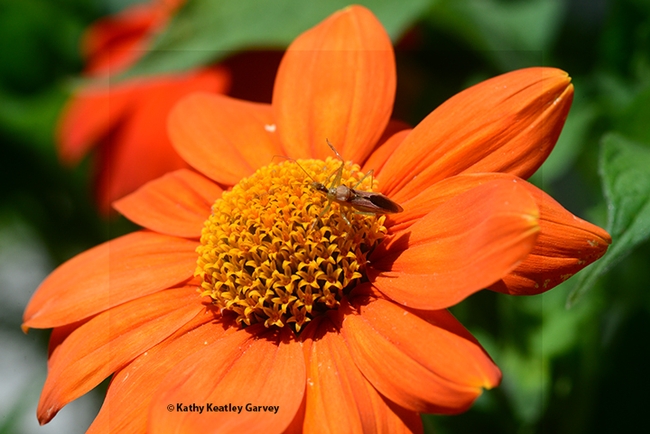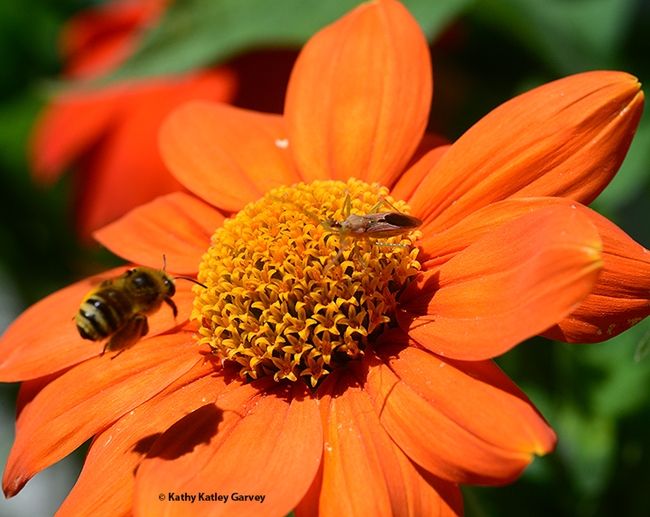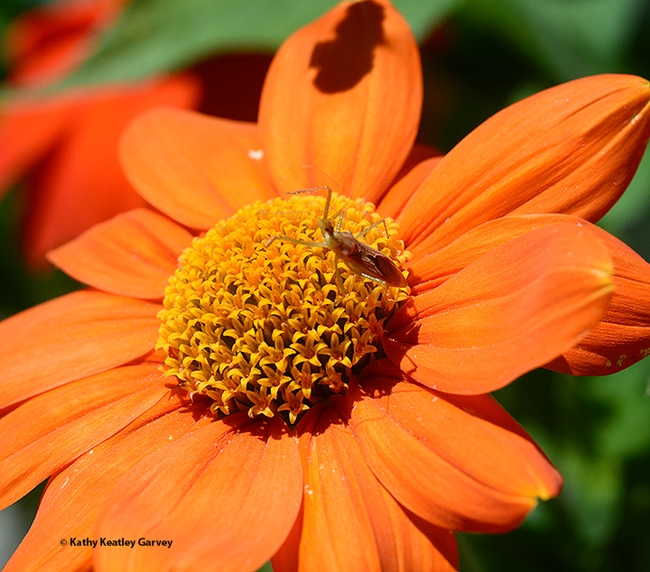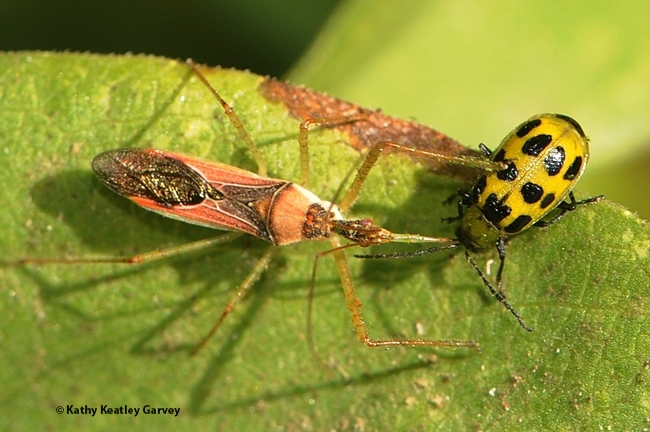No assassinations today! But an "assassination attempt."
There it was, a leafhopper assassin bug, Zelus renardii, waiting for prey atop a Mexican sunflower, Tithonia rotundifola in a Vacaville pollinator garden. Yes, it's native to North America.
The assassin bugs, family Reduviidae, are ambush predators. When they ambush a predator, they stab it with their rostrum, inject venom, and suck out the juices. Or as UC Berkeley entomologists Jerry Powell and Charles Hogue write in their book, California Insects, "The victims, which include all kinds of insects, are snatched by quick movements of the forelegs, and immediately subdued by a powerful venom injected through the beak."
UC Statewide Integrated Pest Management Program (UC IPM) says that "Assassin bug adults and nymphs (immatures) have an elongate head and body and long legs. The narrow head has rounded, beady eyes and long, hinged, needlelike mouthparts. Adults and nymphs can walk rapidly when disturbed or capturing prey. Adults tend not to fly."
"Assassin bugs can occur on almost any terrestrial plant including row and tree crops and gardens and landscapes. All species are predators of invertebrates or true parasites of vertebrates," UC IPM relates. "Most assassin bugs feed on insects including caterpillars, larvae of leaf beetles and sawflies, and adults and nymphs of other true bugs. Nymphs and adults ambush or stalk prey, impale them with their tubular mouthparts, inject venom, and suck the body contents. Zelus renardii produces a sticky material that helps it adhere to plant surfaces and ensnare prey."
Some 7000 species of assassin bugs reside throughout the world. When they feed on such agricultural pests as fleahoppers, lygus bugs, aphids, caterpillar eggs and larvae, they are considered biological control agents.
However, "assassin bugs are not considered to be important in the biological control of pests, unlike predatory groups such as bigeyed bugs and minute pirate bugs," UC IPM says. "Assassin bugs are general predators and also feed on bees, lacewings, lady beetles, and other beneficial species. Certain species feed on the blood of birds, mammals, or reptiles, including conenose bugs and kissing bugs (Reduviidae: Triatominae)."
The one we saw today?
A long-horned bee, Melissodes agilis, stopped for a sip of nectar, spotted the assassin bug, and buzzed off, leaving only its shadow behind.
Attached Images:

An assassin bug, Zelus renardii,waits to ambush prey on a Mexican sunflower, Tithonia rotundifola. (Photo by Kathy Keatley Garvey)

A longhorned bee arrives for some nectar while the assassin bug watches in apparent anticipation. (Photo by Kathy Keatley Garvey)

The longhorned bee leaves only its shadow behind. (Photo by Kathy Keatley Garvey)

This assassin bug had more luck--or better ambushing skills. It nails a pest, a spotted cucumber beetle. (Photo by Kathy Keatley Garvey)